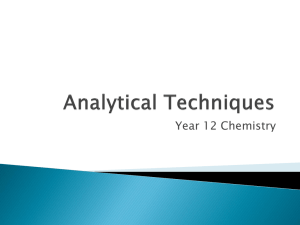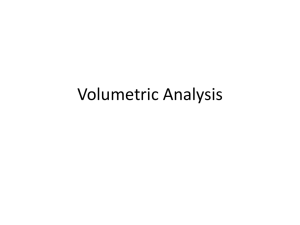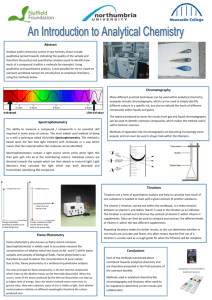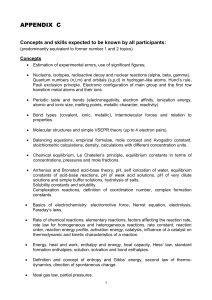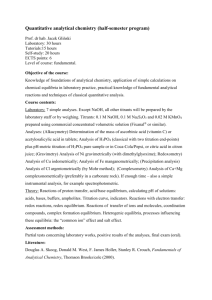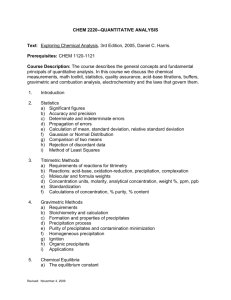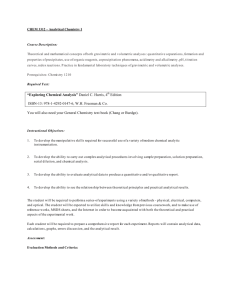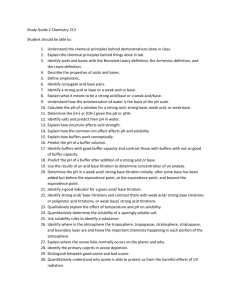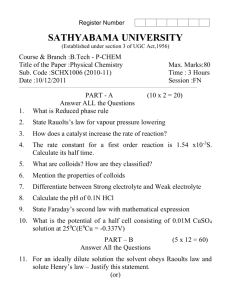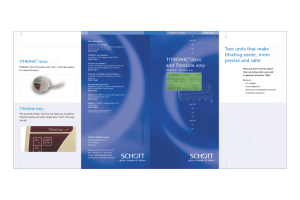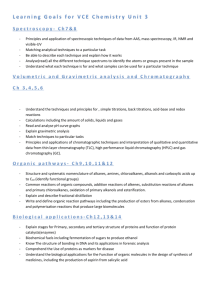Approved Vice – Chancellor for Academic Affairs Vinnitsa National
advertisement
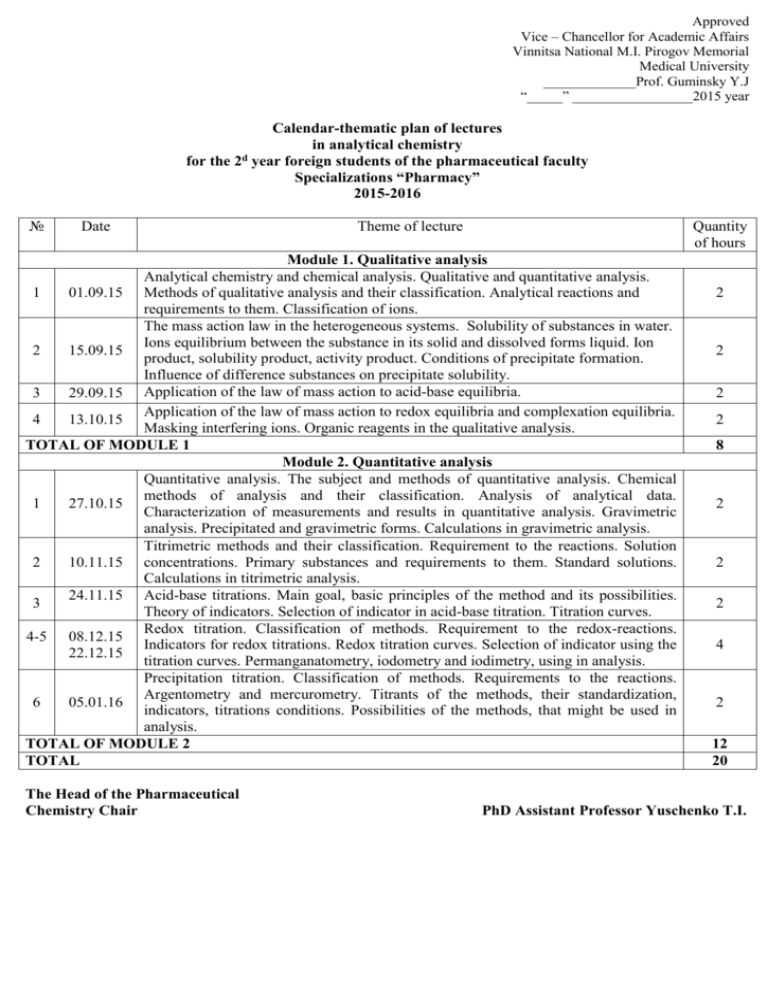
Approved Vice – Chancellor for Academic Affairs Vinnitsa National M.I. Pirogov Memorial Medical University _____________Prof. Guminsky Y.J “_____” _________________2015 year Calendar-thematic plan of lectures in analytical chemistry d for the 2 year foreign students of the pharmaceutical faculty Specializations “Pharmacy” 2015-2016 № Date Theme of lecture Quantity of hours Module 1. Qualitative analysis Analytical chemistry and chemical analysis. Qualitative and quantitative analysis. 1 01.09.15 Methods of qualitative analysis and their classification. Analytical reactions and requirements to them. Classification of ions. The mass action law in the heterogeneous systems. Solubility of substances in water. Ions equilibrium between the substance in its solid and dissolved forms liquid. Ion 2 15.09.15 product, solubility product, activity product. Conditions of precipitate formation. Influence of difference substances on precipitate solubility. 3 29.09.15 Application of the law of mass action to acid-base equilibria. Application of the law of mass action to redox equilibria and complexation equilibria. 4 13.10.15 Masking interfering ions. Organic reagents in the qualitative analysis. TOTAL OF MODULE 1 Module 2. Quantitative analysis Quantitative analysis. The subject and methods of quantitative analysis. Chemical methods of analysis and their classification. Analysis of analytical data. 1 27.10.15 Characterization of measurements and results in quantitative analysis. Gravimetric analysis. Precipitated and gravimetric forms. Calculations in gravimetric analysis. Titrimetric methods and their classification. Requirement to the reactions. Solution 2 10.11.15 concentrations. Primary substances and requirements to them. Standard solutions. Calculations in titrimetric analysis. 24.11.15 Acid-base titrations. Main goal, basic principles of the method and its possibilities. 3 Theory of indicators. Selection of indicator in acid-base titration. Titration curves. Redox titration. Classification of methods. Requirement to the redox-reactions. 4-5 08.12.15 Indicators for redox titrations. Redox titration curves. Selection of indicator using the 22.12.15 titration curves. Permanganatometry, iodometry and iodimetry, using in analysis. Precipitation titration. Classification of methods. Requirements to the reactions. Argentometry and mercurometry. Titrants of the methods, their standardization, 6 05.01.16 indicators, titrations conditions. Possibilities of the methods, that might be used in analysis. TOTAL OF MODULE 2 TOTAL The Head of the Pharmaceutical Chemistry Chair 2 2 2 2 8 2 2 2 4 2 12 20 PhD Assistant Professor Yuschenko T.I. Approved Vice – Chancellor for Academic Affairs Vinnitsa National M.I. Pirogov Memorial Medical University _____________Prof. Guminsky Y.J “_____” _________________2015 year Calendar-thematic plan of lectures in analytical chemistry d for the 2 year foreign students of the pharmaceutical faculty Specializations “Pharmacy” 2015-2016 № 7 Date Theme of lecture Quantity of hours Module 2. Quantitative analysis Titrations based on complexation reactions and their classification. Mercurimetry. Complexonometry. Titrants of the methods, their standardization, indicators, condition of determination. Methods that might be used in analysis. TOTAL OF MODULE 2 1 2 3-4 2 Module 3. Instrumental methods of analysis Instrumental methods of analysis and their classification. Optical methods of analysis and their classification. Molecular spectroscopy. Molecular absorbtion spectroscopy. Photometry and spectrofotometry. Methods of concentration determination. Chemical and medical substances that are used in analysis. Electrochemical methods of analysis. Classification of electrochemical methods. Potentiometric methods of analysis. Direct potentiometry (ionometry). Potentiometric titrations. Utilization of potentiometric methods in chemical analysis. Chromatographic methods in analysis and their utilization in qualitative analysis. Gas chromatography. Liquid chromatography. Ion-exchange chromatography. Thin-layer and paper chromatography. TOTAL OF MODULE 3 Total The Head of the Pharmaceutical Chemistry Chair 2 2 2 4 8 30 PhD Assistant Professor Yuschenko T.I.
